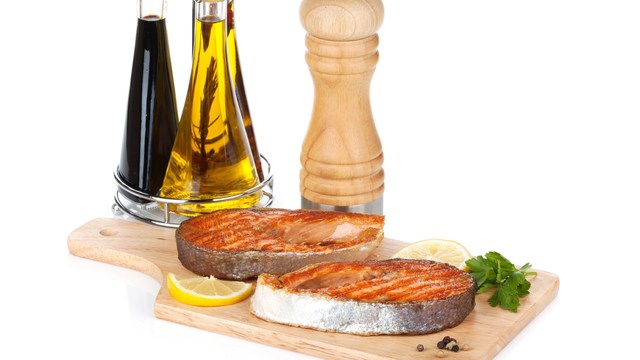 Evgeny Karandaev/PhotoSpin
Evgeny Karandaev/PhotoSpin
We all need fats to not just survive but thrive! What most people do not know is how to identify healthy fats and eat those as part of a healthy diet.
In order to identify healthy sources of fats we have to know a little bit about science and little bit about food. From a scientific perspective we need to understand that fat is a type of nutrient that is used as an energy source the body.
It is also one of the building blocks for all of our cells in the body. Fat is formed from fatty acid building blocks and it is usually solid at room temperature. Oils have the same characteristics as fat except that they are usually liquid at room temperature.
1) The healthiest fats in our diets are found mostly in plant sources. Unsaturated fats are healthy sources for our diet. They are categorized as monounsaturated fats or polyunsaturated fats.
Unsaturated fats
Unsaturated fats have a double bond as part of their chemical structure. They tend to be liquid at room temperature and come from plant sources such as nuts, vegetable sources and fish.
Monounsaturated fats also known as MUFAs are found in plants. Here are some examples to add to your diet.
• Nuts
• Vegetable oils
• Canola oil
• Olive oil
• High oleic safflower oil
• Sunflower oil
• Avocado
Polyunsaturated fats also known as PUFAs are found in plants, fish and seafood. Our essential fatty acids have to come from food because we can’t produce them in our bodies. Omega-3 and omega-6 essential fatty acids are part of this group.
• Soybean oil
• Corn oil
• Safflower oil
• Canola oil
• Walnuts
• Flaxseed
• Trout
• Herring
• Salmon
2) Limit your unhealthy fats (saturated fats) and replace them with healthy fats whenever possible.
Saturated Fats
If a fat is saturated it has all single bonds and no double bonds as part of its chemical structure. When we think about saturated fats in terms of our food we tend to think about fats that are solid at room temperature. Saturated fats generally come from animal sources like red meats, butter, high-fat cheese, whole-fat milk or ice cream. There are a few sources of plant-based saturated fats. Palm oil and coconut oil are examples.
3) Avoid fats that are created in a lab and not in nature at all.
Trans fatty acids or hydrogenated oil are oils that were created in a lab and not in nature so our bodies don’t do a good job of eliminating them from our system. Trans fatty acids like saturated fats contribute to the raising of the bad cholesterol and the clogging of our arteries.
Examples of trans fatty acids are:
• Vegetable shortening and margarines
• Baked goods, crackers, cookies, granola bars
• Snack foods, chips
• Salad dressings
Now you know the secrets to identifying healthy fats and you can make better choices for your diet and your health!
Live Vibrantly,
Dr. Dae
Dr. Dae's website: www.healthydaes.com
Dr. Dae's book: Daelicious! Recipes for Vibrant Living can be purchased @ www.healthydaes.com
Dr. Dae's Bio:
Dr. Daemon Jones is your diabetes reversal, hormones, metabolism and weight loss expert. Dr. Dae is a naturopathic doctor who treats patients all over the country using Skype and phone visits. Visit her or schedule a free consultation at her website www.HealthyDaes.com/
Sources:
Clinic-Feature, Denise. "Trans Fats: The Science and the Risks." WebMD. WebMD, n.d. Web. 12 Aug. 2014.
http://www.webmd.com/diet/features/trans-fats-science-and-risks
"Fat." Medterms. N.p., n.d. Web. 12 Aug. 2014.
http://www.medterms.com/script/main/art.asp?articlekey=3394
"Polyunsaturated Fats and Monounsaturated Fats." Centers for Disease Control and Prevention. Centers for Disease Control and Prevention, n.d. Web. 12 Aug. 2014.
http://www.cdc.gov/nutrition/everyone/basics/fat/unsaturatedfat.html
"University of Michigan Health System." UMIM: Healing Foods Pyramid. N.p., n.d. Web. 12 Aug. 2014.
http://www.med.umich.edu/umim/food-pyramid/fats.htm
"Unsaturated fat." Medterms. N.p., n.d. Web. 12 Aug. 2014.
http://www.medterms.com/script/main/art.asp?articlekey=18389
Reviewed August 13, 2014
by Michele Blacksberg RN
Edited by Jody Smith





Add a CommentComments
There are no comments yet. Be the first one and get the conversation started!